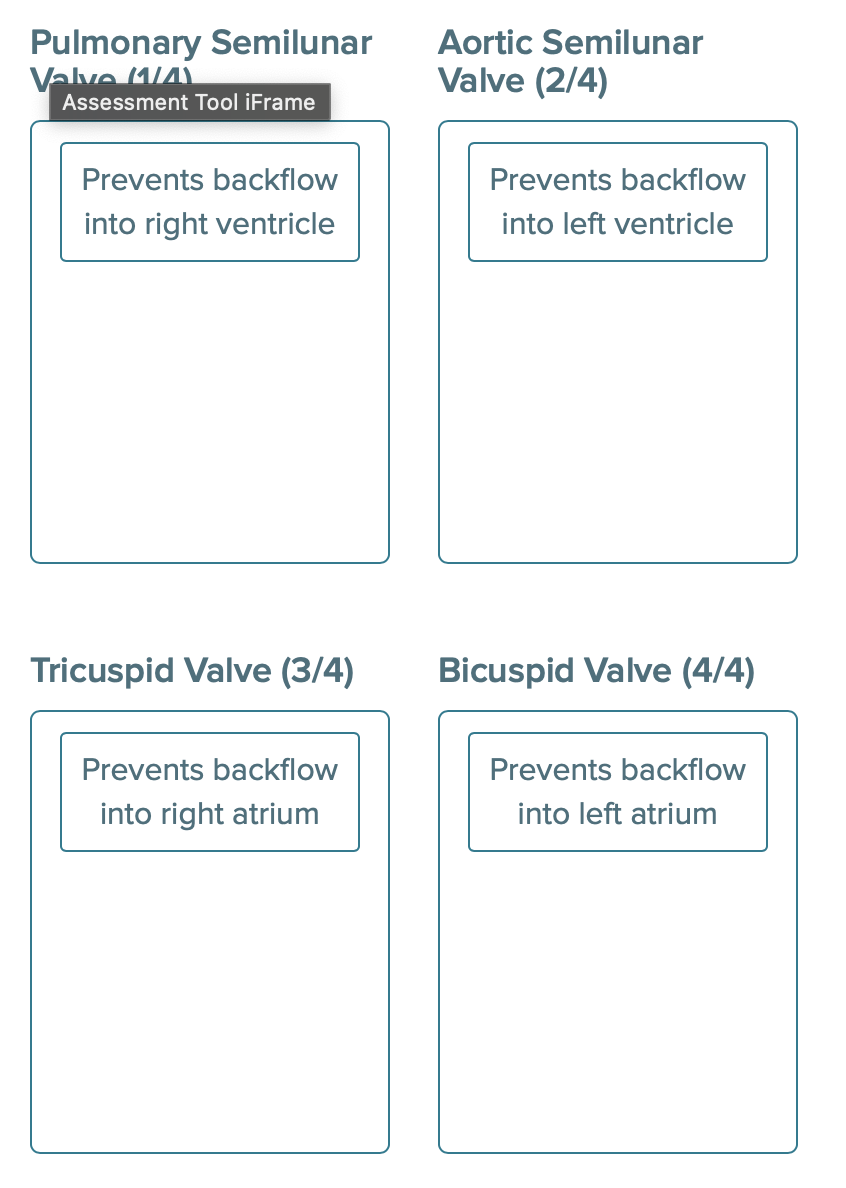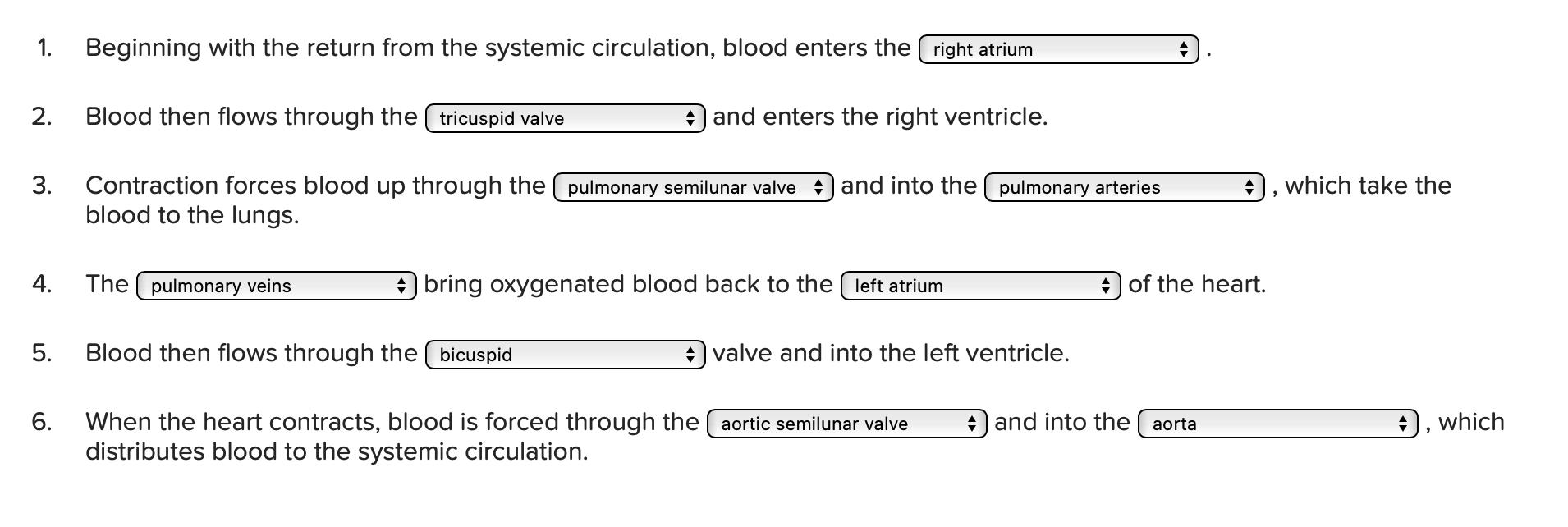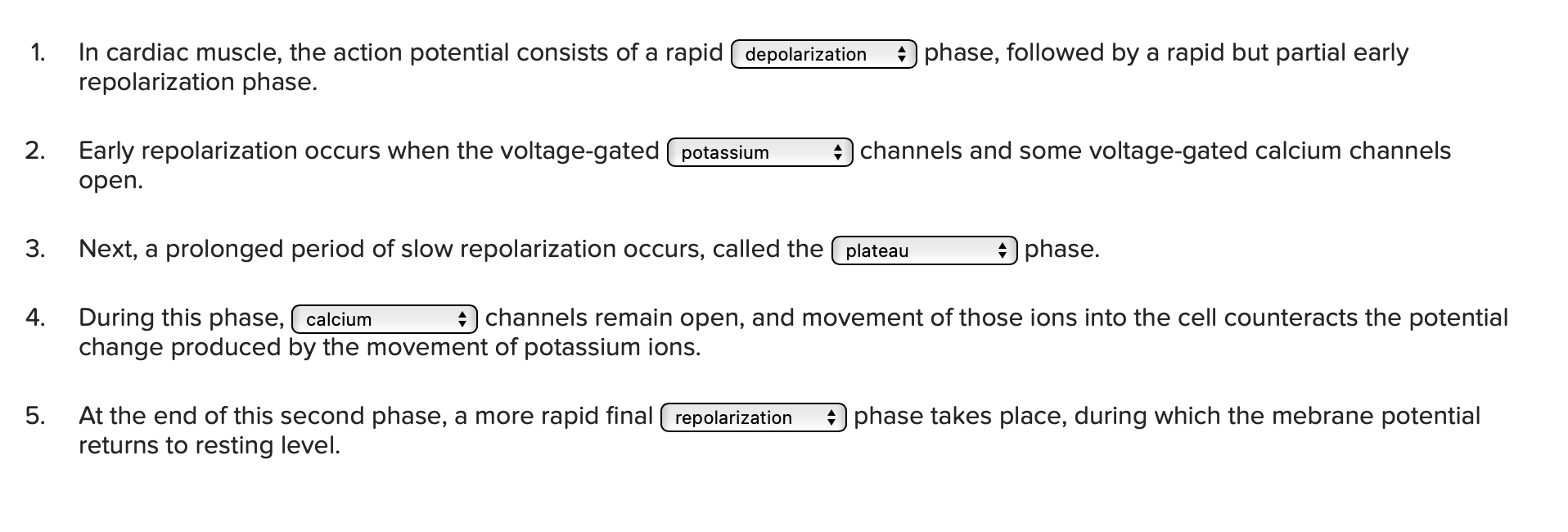A&P II / Heart Review
1/19
There's no tags or description
Looks like no tags are added yet.
Name | Mastery | Learn | Test | Matching | Spaced |
|---|
No study sessions yet.
20 Terms
systemic
The left side of the heart pumps blood through the __________ circulation, which delivers oxygen and nutrients to all the remaining tissues of the body.
pulmonary
The right side of the heart pumps blood through vessels to the lungs and back to the left side of the heart through the __________ circulation.
visceral pericardium
The epicardium is also known as the
left atrium
The __________ has four relatively uniform openings that receive blood from the four pulmonary veins from the lungs.
Drag each statement to the appropriate position to identify the valve being described

Complete each sentence by choosing the correct words.

The ventricles fill with blood
Which of the following does not occur during ventricular systole?
ventricular diastole
The atrioventricular valves open during
sinoatrial node
In the heart, an action potential originates in the
Sinoatrial node; atrioventricular node; atrioventricular bundle; bundle branches; Purkinje fibers
Identify the correct sequence of an action potential travelling through the heart.
action potentials pass slowly through the atrioventricular node.
In the conduction system of the heart, ___________.
Place the components of the electrical conducting system in order from the initiation of an action potential until the end.

Select the correct word from the list to complete each sentence addressing the phases of cardiac muscle action potentials.

Indicate whether each statement is true or false.

a. Just after the QRS complex, the ________occurs.
b. Upon the left ventricular pressure reaching 80 mm Hg, the aortic semilunar valve opens. This is the ________.
c. Atrial systole completes ventricular filling during _________.
d. The T wave is completed and the ventricles are repolarizing during the ________.
period of isovolumetric contraction; period of ejection; active ventricular filling; period of isovolumetric relaxation
a. The __________ is a higher-pitched sound resulting from closure of the aortic and pulmonary semilunar valves at the beginning of ventricular diastole.
b. The __________ is a low-pitched sound caused by vibration of the atrioventricular valves and surrounding fluid as the valves close at the beginning of ventricular systole.
c. The __________ is occasionally heard in some normal people, particularly those who are thin and young. It is caused by blood flowing in a turbulent fashion into the ventricles.
second heart sound; first heart sound; third heart sound